Do you know your owls? If you live in Maryland, there’s a good chance you’re familiar with some of the common owl species that call our state home. In this blog post, we will take a look at the different types of owls that can be found in Maryland. We’ll learn about their physical characteristics, where they live, and what they eat. So grab your binoculars and let’s get started!
With photographs and important information, we’ll reveal the most frequent owls in Maryland. The data were gathered only through reputable sources and confirmed with a Bird Scientist.
Most Common Owls in Maryland
Long-eared Owl
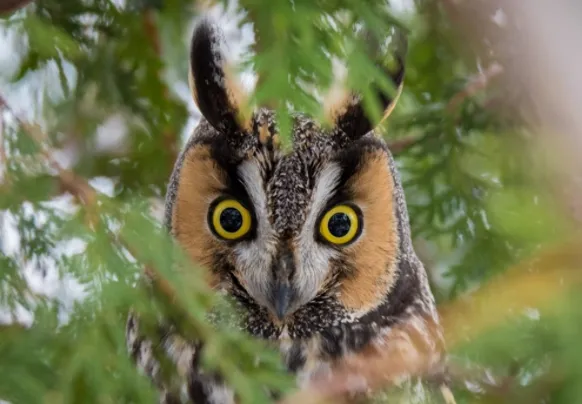
Long-eared owls are medium to large owls with long ear tufts. They have yellow eyes and a dark facial disk with white eyebrows. The upper parts are brownish with streaks while the underparts are white with heavy dark streaks. They weigh about 12 ounces and have a wingspan of about 43 inches.
Long-eared owls occur in North America, Europe, Asia, and Africa. In the United States, they are found from coast to coast except for the desert southwest. They inhabit open country such as prairies, farmland, and forests.
Long-eared owls hunt at night from perches. They eat mostly small mammals such as mice, voles, and shrews. During the day, they roost in trees or on the ground in dense cover.
Long-eared owls are relatively uncommon and their numbers have declined due to habitat loss. They are classified as a species of least concern by the IUCN.

Snowy Owls
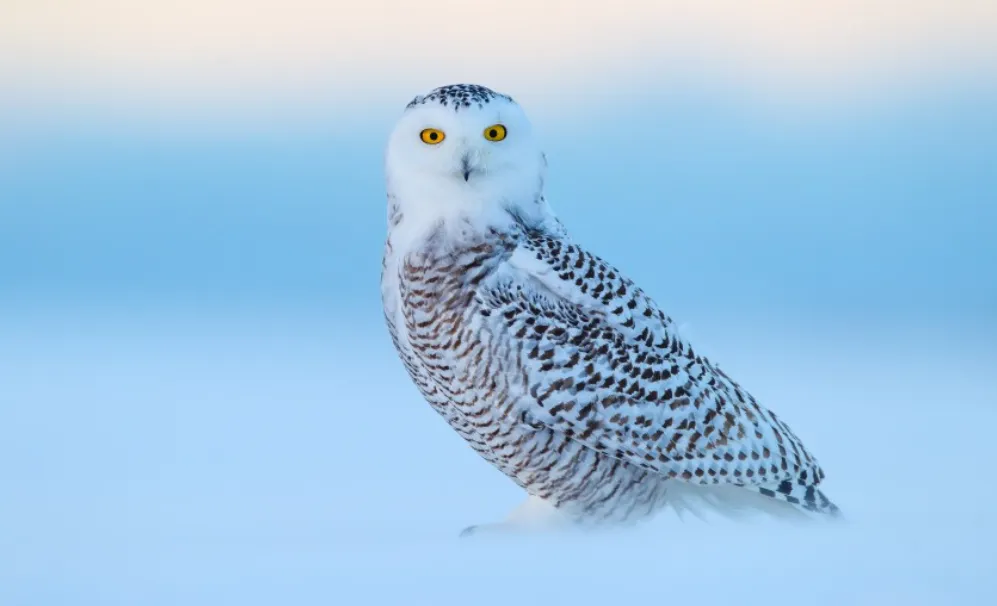
The snowy owl is a large, white owl of the family Strigidae. Snowy owls are native to Arctic regions in North America and Eurasia. These birds nest on the ground, building a scrape on top of a mound or boulder. A female can lay up to 11 eggs, which hatch after about 34 days. The young owls fledge at around nine weeks old.
Snowy owls are one of the heaviest members of the genus Otus. They range in size from 19 to 28 inches long and have a wingspan of up to 60 inches. Females are larger than males, on average weighing about three pounds more. These owls have a round head, yellow eyes, and a black beak. The plumage is all white except for the black tips of their wings and tail feathers.
Snowy owls are diurnal birds, meaning they are active during the day. They hunt small mammals such as rabbits and rodents, as well as birds. When hunting, they perch on a high spot and scan the ground for prey. They also eat carrion or dead animals.

Burrowing Owls

They are sometimes seen perched on fence posts or utility wires along country roads. They also may be observed standing on the ground, watching for prey. These owls are very active during the day and can often be seen hunting in open fields. Burrowing Owls typically eat small rodents, such as voles, mice, and rats. They will also eat insects, reptiles, and birds.
The best time to see a Burrowing Owl in Maryland is during the nesting season, which typically runs from March through August. During this time, owls can be found on farms and other open areas where they build their nests. Nests are usually located in abandoned rodent burrows, but they can also be found in trees, on the ground, or in man-made structures.
Burrowing Owls are usually not aggressive and will usually only attack if they feel threatened. If an owl is approached too closely, it may hiss and spread its wings to appear larger. Burrowing Owl chicks are very small and vulnerable and can be easily harmed by humans. It is important to keep your distance from nests and chicks and to never disturb them.

Great Horned Owls
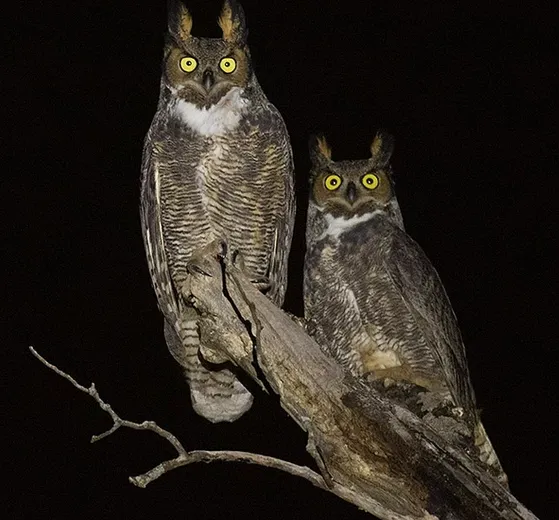
Great Horned Owl Scientific Name: Bubo virginianus
The Great Horned Owl is one of the most common owls in North America. They are easily recognizable by their large size and “horned” ears. Great Horned Owls are predators, feeding mainly on small mammals such as rabbits, squirrels, and rats. They are also known to eat birds, amphibians, and reptiles.
Great Horned Owls are typically nocturnal, but can also be active during the day. They are very territorial and will often attack other animals (or humans) that come too close to their territory. Great Horned Owls mate for life and build nests in trees or on cliffs. The female lays two to four eggs, which hatch after about a month.
Great Horned Owls are found throughout North America, from Alaska and Canada all the way down to Mexico. In Maryland, they can be found in forested areas and along the coast. They are a common sight during the winter months.
Great Horned Owls are interesting birds and make great additions to any birding list. They are easy to identify and have unique characteristics that set them apart from other owls.

American Barn Owl
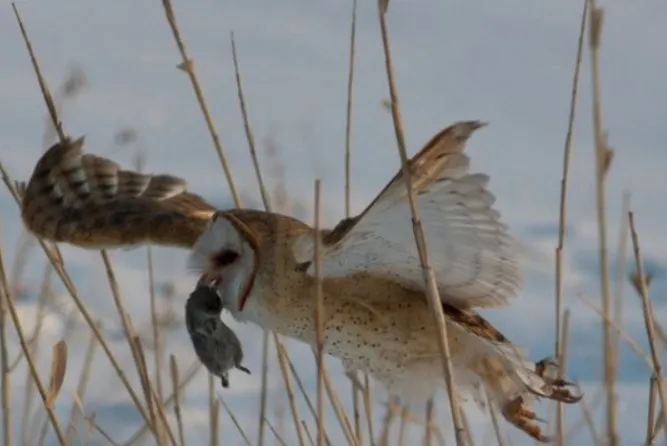
The American Barn Owl is a medium-sized owl with a wingspan of about 43 inches. They are mostly white with some light brown markings on their heads and chests.
Their eyes are orange and they have a black beak. These owls are nocturnal and hunt small mammals, such as rodents, rabbits, and bats.
They nest in trees, caves, or old buildings. You can often find them near farms since they like to eat mice and rats. In Maryland, you can find these owls in the eastern and central parts of the state.

Short-eared Owls
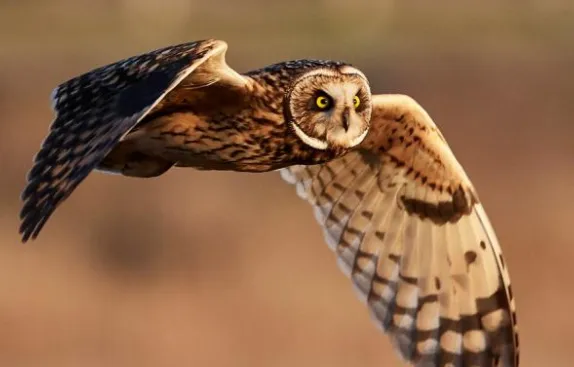
The Short-eared Owl is a medium-sized owl with mottled brown and white feathers. They have large, rounded heads and big eyes. These owls are usually nocturnal, but can also be seen during the day if they are hunting. They live in open areas near wetlands, such as fields, marshes, and prairies.
Short-eared Owls hunt by flying low over the ground and scanning for prey. They eat small mammals, such as mice and voles, as well as birds. These owls are very territorial and will often defend their territory from other animals, including other owls.
Short-eared Owls are found in North America, Europe, and Asia. In the United States, they are most common in the Midwest and West. They winter in Mexico and Central America.
These owls are considered a species of least concern by the IUCN Red List of Threatened Species. However, their populations have been declining in recent years due to habitat loss and degradation. Short-eared Owls are protected under the Migratory Bird Treaty Act.
Related post: Types of Owls in West Virginia

Eastern Screech Owls
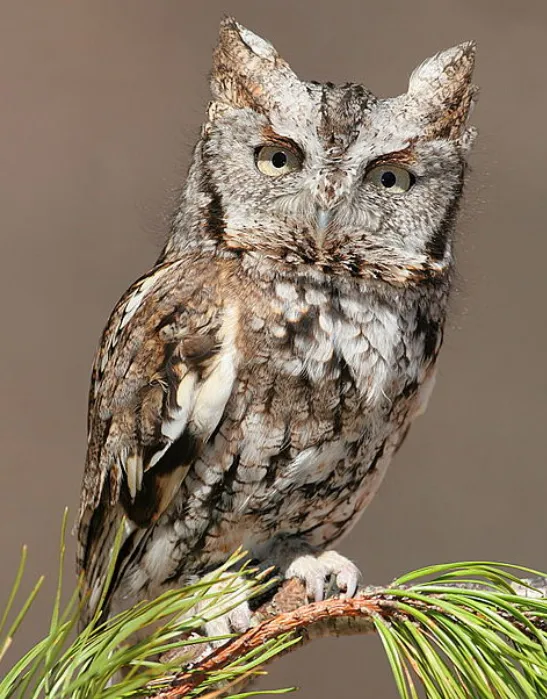
Eastern Screech Owl Scientific name – Megascops asio
The Eastern Screech Owl is a small owl, measuring only about eight to ten inches in length. Its body is covered in soft, gray feathers, which help it to blend in with the bark of trees. It has large, yellow eyes and a hooked beak. The Eastern Screech Owl can be found in wooded areas throughout Maryland.
This owl is nocturnal, meaning that it hunts and feeds at night. It preys on small mammals, such as mice, rats, and rabbits. The Eastern Screech Owl also eats insects, including grasshoppers, beetles, and spiders. It can usually be found perched high in a tree, where it can watch for its prey.
The Eastern Screech Owl is a very quiet owl, and is rarely heard making any sound. However, when it does call, it emits a high-pitched screeching noise. This owl is also known to make a hooting noise, which sounds like “Who cooks for you? Who cooks for you all?”

Northern Saw-whet Owl
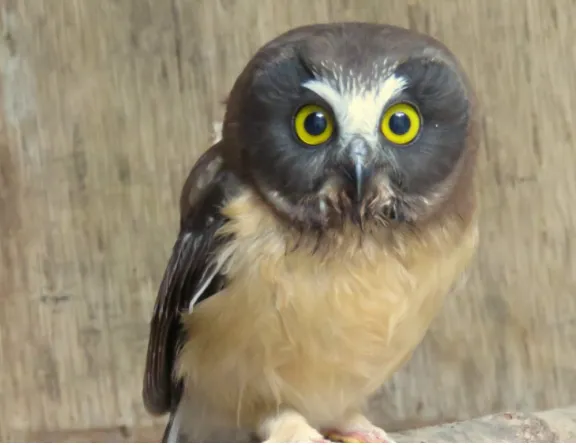
The Northern Saw-whet Owl is a small owl with distinctive white facial markings. It has a brown body with white spots and streaks, and its underparts are pale. This owl is found in forests across North America, including in Maryland. In Maryland, the Northern Saw-whet Owl breeds in deciduous and mixed forests, and it winters in forests and woodlands.
The Northern Saw-whet Owl is a small owl that typically measures between seven and nine inches in length. It has a brown body with white spots and streaks, and its underparts are pale. The owl has distinctive white facial markings, including a white “eyebrow” above its yellow eyes. The Northern Saw-whet Owl is found in forests across North America, including in Maryland.
In Maryland, the Northern Saw-whet Owl breeds in deciduous and mixed forests. These owls typically nest in tree cavities or old woodpecker holes. The Northern Saw-whet Owl winters in forests and woodlands, where it feeds on small mammals such as mice, rats, and chipmunks.
The Northern Saw-whet Owl is a secretive owl that is not often seen by people. However, this owl can be heard calling throughout the year – its call sounds like “to-wit to-wit.” The Northern Saw-whet Owl is a valuable predator that helps to control populations of rodents, and it is an important part of our natural ecosystems.

Barred Owl
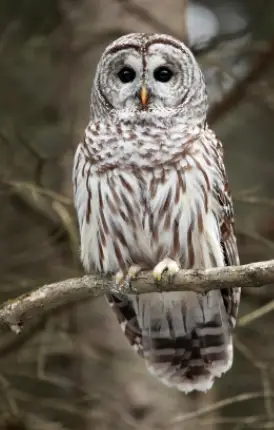
Barred Owl Scientific Name: Strix varia
The Barred Owl is a medium-sized owl with brown and white barred feathers. They are the most common owls in Maryland. Barred Owls have a round head, yellow eyes, and a deep hooting voice. They eat small mammals, birds, reptiles, and amphibians. Barred Owls nest in tree cavities or abandoned nests. You can find Barred Owls in woods, forests, and parks.
Barred Owls are nocturnal, so you are more likely to hear them at night. If you hear a “who-cooks-for-you” call, it is probably a Barred Owl! To attract a Barred Owl, put up a nest box in good habitat. Make sure the nest box has a large opening (at least five inches in diameter) and is at least two feet deep. Barred Owls will also use artificial nest platforms.

What time of day are owls active?
Owls are nocturnal creatures, so they are most active at night. However, you may see an owl hunting during the day if it is disturbed or if there is not enough prey available at night. Some owls are more likely to be active during the day than others. For example, the barn owl hunts during the day while the great horned owl is more likely to be active at night.
If you are hoping to see an owl, your best bet is to look for them at night. However, you may get lucky and see one during the day as well. Keep your eyes peeled and you just might spot one of these amazing creatures!
What is the biggest owl in Maryland?
The biggest owl in Maryland is the barred owl. The barred owl is about 18-20 inches long and has a wingspan of up to 48 inches. The barred owl is mostly brown with some white spots on its chest. It lives in forests and woodlands near bodies of water.
Spotting Owls
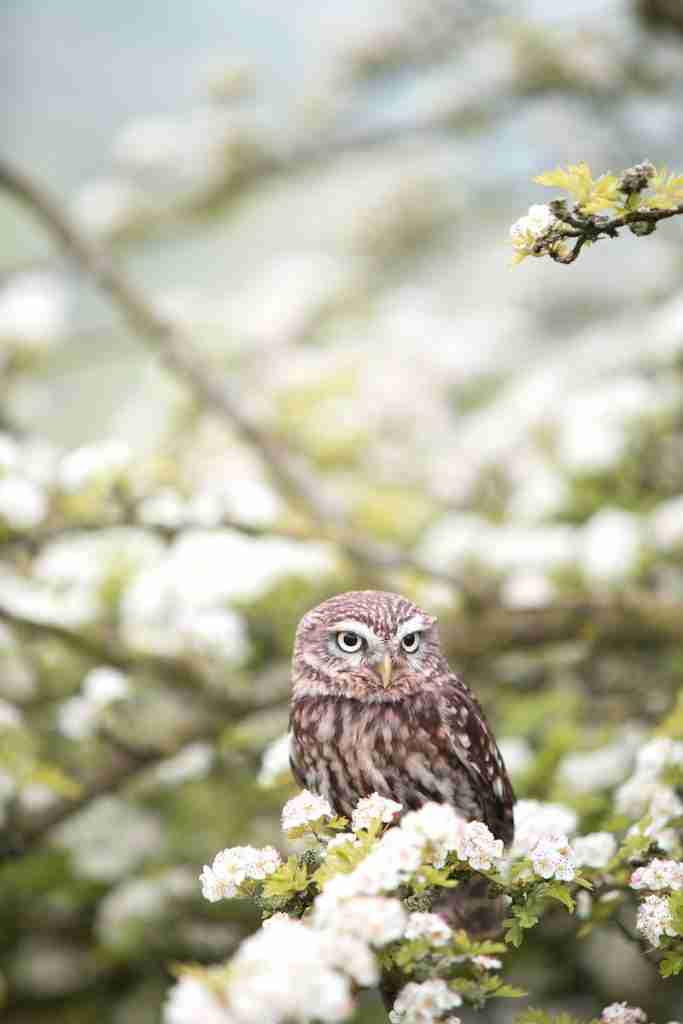
Owls are one of the most popular birds in North America. Though they are mostly nocturnal, these fascinating creatures can occasionally be seen during the day. If you’re lucky enough to spot an owl, there are a few things you can look for to identify it.
One of the most distinguishing features of owls is their large, round eyes. Their eyes are so big that they can’t move them in their sockets, so owls have to turn their entire head to look around. They also have a distinctive “face” pattern that helps identify them.
Owls have two different kinds of feathers: short and coverts. The short feathers are the ones that you see sticking out of an owl’s body, while the coverts are the feathers that cover and protect the short feathers.
Owls have a lot of different calls, which they use to communicate with each other. The most common call is a “hoot”, though some owls also make whooping sounds, screeches, and whistles.


An avid ornithologist, zoologist and biologist with an unwavering passion for birds and wild animals.
Dr. Wilson’s journey in ornithology began in childhood and led him to obtain a Ph.D. in Ornithology from the prestigious Avian Research Institute. He has worked closely with renowned experts in the field and conducted extensive research and field studies globally.

